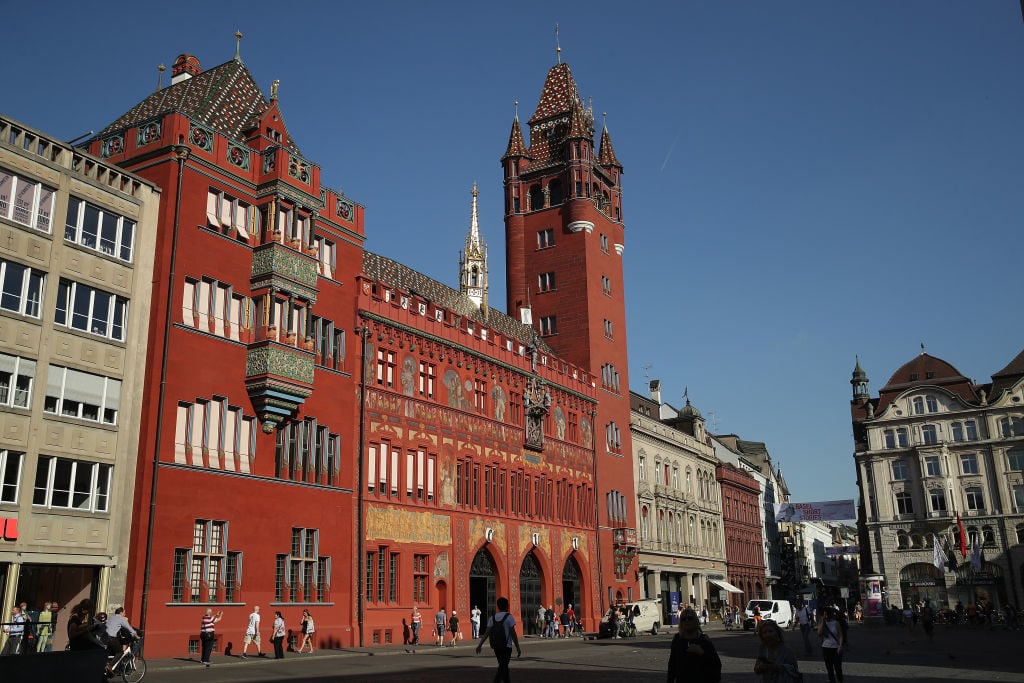Art World
‘It Has Become Too Expensive’: A New Satellite Art Fair Aims to Challenge the Status Quo in Basel
The boutique fair seeks to "provide respite" for overwhelmed collectors.

The boutique fair seeks to "provide respite" for overwhelmed collectors.

Henri Neuendorf

A new satellite fair centered on young galleries and emerging artists will debut in Basel this month, and it aims to turn the art fair model on its head in the process. Frame Art Fair, which kicks off June 10, is hoping to carve out a niche in the crowded event calendar with an intimate, tightly focused presentation of international galleries to attract visitors in town for the larger and grander Art Basel.
The new fair includes only 13 international galleries spread across a relatively intimate 8,500-square-foot venue, a concrete attempt to battle art-fair fatigue. Each exhibitor occupies a booth of equal size, breaking down the all-too-familiar hierarchy codified into most rival fairs. The result, the founders claim, is a more egalitarian value proposition for participants and a more pleasant, less overwhelming experience for visitors. Dealers from a wide range of cities—including New York, Paris, Barcelona, and Budapest—have signed on.
“Art fairs are not structured to meet our needs,” French gallerist and co-founder of Frame Bertrand Scholler told artnet News. “It has become too expensive so we’re trying to develop new ways to enable galleries to become more powerful in the market.” Speaking to Art Media Agency, Scholler likened art fairs to drugs: While galleries rely on fairs for sales, the cost of participating is killing them.
Frame asks participants to adopt a highly collaborative approach, sharing resources, responsibilities, and knowledge to more evenly distribute the enormous financial and logistical burden associated with large-scale shows.
“There is a gallery from New York called SAAB Projects that is taking care of all social media for the fair, and my gallery 55 Bellechasse is preparing the website,” Scholler said. “A Spanish gallery called About Art is working on the press release, and a gallery from Switzerland has recruited students to mount posters in the streets and take care of partnerships with sponsors.”
Booth prices are reasonable, ranging from €10,000 to €12,000 ($11,600 to $14,000). They are also all-inclusive, with no hidden costs, and fund a number of bonuses such as breakfast for the duration of the fair and cocktail events for clients.
The pricing, Scholler says, is consistent with the fair’s overarching ethos, which prizes group success over individual profits. “The goal is not for the fair to be profitable, but make the fair a tool that makes all the galleries more profitable,” he explained. “Any money that is made will be reinvested.” Indeed, organizers are already planning fairs in other cities like New York, Paris, and Miami.
Scholler is confident that Frame’s approach can capitalize on the current paradigm shift in which galleries are demanding more from fairs. But he’s not alone. Numerous more established competitors have made similar promises in recent years. In Basel alone, existing satellite fairs, including Liste, Volta, Scope, and various other gallery-led initiatives claim to be addressing the same problem. (Notably, Liste’s cheapest stands start at just over €6,000, significantly less than Frame’s.)
It remains to be seen, however, if a fair that challenges longstanding conventions can survive within in an increasingly competitive art-fair landscape—or whether adding more fairs can solve the problem at all.
Frame will be held at the Basel Art Center, Riehentorstrasse 31, from June 10 to June 18.